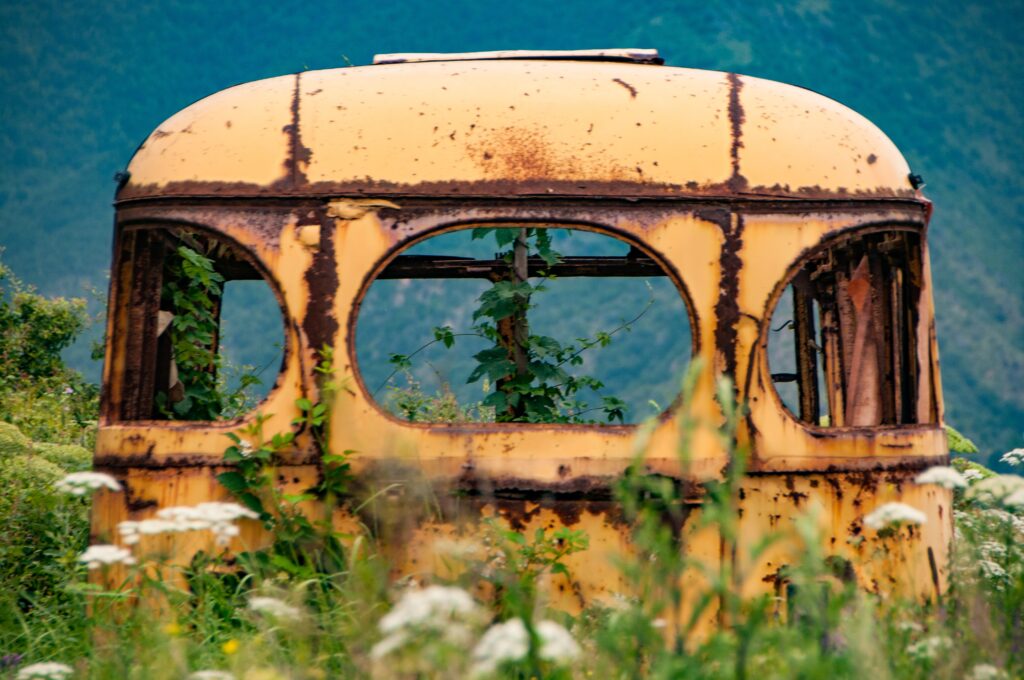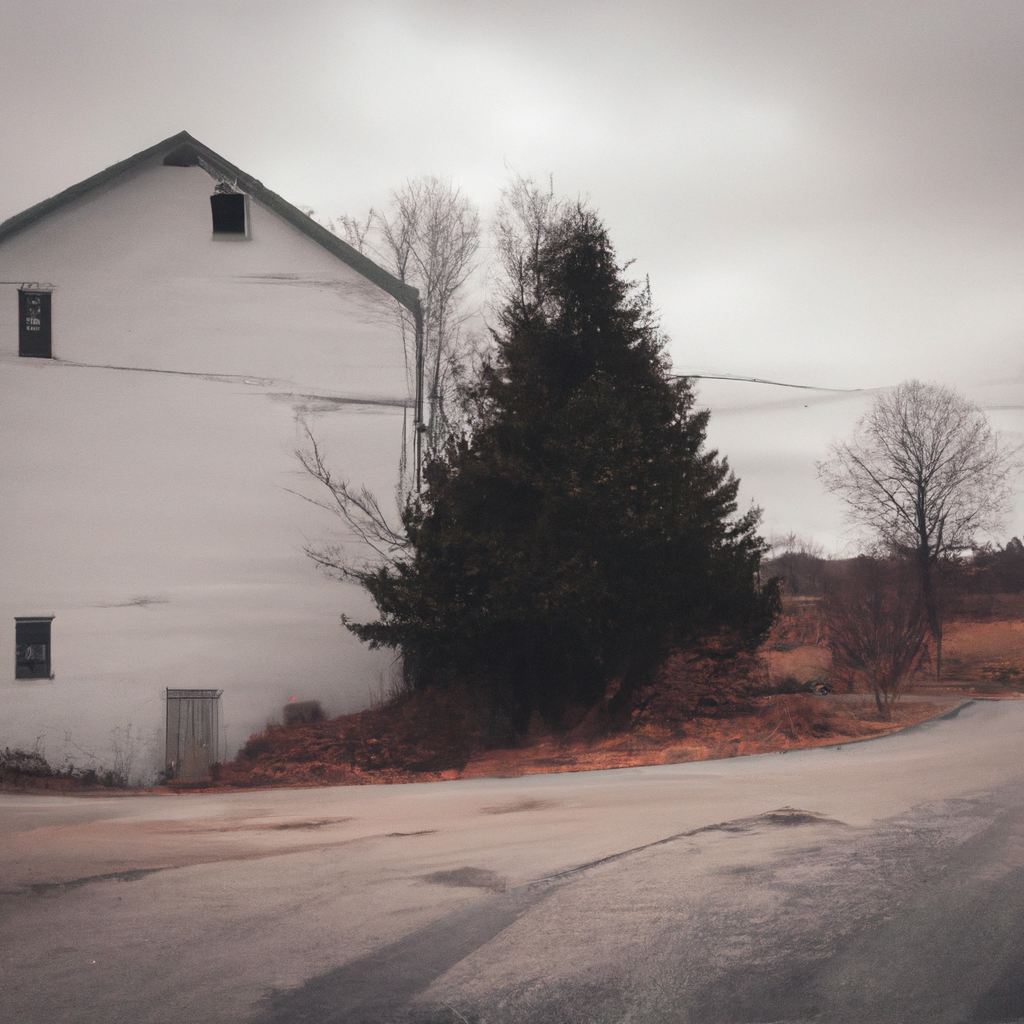Imagine a world where society as we know it has collapsed. In the face of this chaos, finding a safe haven becomes crucial. But where would be the best place to live if society were to crumble? In this article, we will explore various factors that contribute to an ideal location for survival, such as access to resources, community support, and geographical advantages.
Whether you are a doomsday prepper or simply curious about post-apocalyptic scenarios, this article will provide valuable insights into the best place to weather the storm and rebuild in the aftermath of a societal collapse.
1. Rural Areas
Living in rural areas can offer several advantages if society collapses. One of the main advantages is the abundance of open space and natural beauty. In rural areas, you can enjoy the tranquility and peace that comes with being surrounded by nature. The lack of noise pollution and congestion can significantly improve your quality of life and help you find inner peace.
Additionally, rural areas often have close-knit communities where people look out for one another. This sense of community can provide a strong support system during challenging times. In rural areas, you are more likely to know your neighbors and build relationships based on trust, making it easier to come together and support each other in times of crisis.
Self-sustainability is another key advantage of living in rural areas. Due to the vast amount of land available, you have the opportunity to cultivate your own food through farming or gardening. This self-sufficiency in food production can ensure that you have a sustainable food source even when grocery stores are inaccessible. Furthermore, rural areas often have access to natural resources like forests or freshwater, which can be utilized for energy, water supply, and other essential needs.
However, it’s important to consider the challenges of living in rural areas as well. One major challenge is the limited access to certain amenities and services. Medical facilities, schools, and other essential services may be located far away, requiring longer travel times or lack of immediate access during emergencies. Additionally, rural areas might have limited job opportunities, making it more difficult to sustain a livelihood without relying on external sources.
2. Remote Islands
If you are looking for a secluded and secure place to live in case of societal collapse, remote islands can be an attractive option. Islands provide a natural barrier against potential threats, offering a higher level of security and seclusion. With limited access points, it becomes more challenging for outsiders to reach these areas, ensuring greater protection for you and your community.
Remote islands often boast abundant natural resources, such as fish from surrounding waters or fertile land for agriculture. This self-sustainability in terms of food production can be a significant advantage, as you won’t have to rely heavily on external sources for sustenance. The availability of resources allows for a more sustainable and independent lifestyle.
However, living on remote islands also comes with certain drawbacks. The isolation can lead to limited access to essential services and supplies. Medical emergencies, for example, may require long-distance travel to reach the nearest hospital or medical facility. Additionally, the limited infrastructure on remote islands might result in challenges in terms of energy supply, transportation, and communication.

3. Mountainous Regions
Mountainous regions present unique advantages for those seeking a place to live if society collapses. The natural barriers provided by mountains can act as a defensive measure, making it more difficult for potential threats to penetrate these areas. This can provide an added layer of protection and give you a sense of security.
The abundance of natural resources in mountainous regions is another major advantage. These areas often offer access to freshwater sources, allowing for a continuous supply of clean water. Additionally, mountains are rich in minerals and fertile soil, providing opportunities for agriculture and self-sustainability. You can utilize these resources to create a sustainable lifestyle and ensure your survival in times of crisis.
However, harsh living conditions and limited infrastructure can pose challenges in mountainous regions. Extreme weather conditions, such as heavy snowfall or strong winds, can make day-to-day life more difficult and require additional preparation. Furthermore, the lack of developed infrastructure may limit access to essential services and can make transportation challenging, especially in emergencies.
4. Uninhabited Wilderness
For those seeking complete independence and privacy in a post-apocalyptic world, uninhabited wilderness areas offer an attractive option. These areas provide an opportunity to disconnect from society entirely and live off the land. With no other inhabitants around, you can establish your own rules and create a lifestyle that aligns with your values and needs.
The abundance of natural resources in uninhabited wilderness areas is another significant advantage. These areas are often untouched by human activity, meaning that there is potential for ample hunting, fishing, and foraging opportunities. You can rely on these resources to meet your basic needs and maintain self-sufficiency.
However, living in uninhabited wilderness areas also poses challenges. The lack of basic amenities, such as electricity, running water, or communication networks, means that you need to have the necessary survival skills and knowledge to thrive. It requires a high level of self-sufficiency, adaptability, and resourcefulness to make a life in such harsh and isolated environments.

5. Underground Bunkers
When considering a place to live in the event of societal collapse, underground bunkers offer a high level of protection. These fortified structures are designed to withstand various threats, including natural disasters and human conflicts. The secure nature of underground bunkers can provide peace of mind and a sense of safety during unsettling times.
Underground bunkers often come equipped with built-in resources, such as water filtration systems and renewable energy sources, allowing for self-sustainability. Additionally, they provide protection from the elements, ensuring a consistent living environment even in harsh conditions. The availability of underground resources, such as geothermal energy or groundwater, can further contribute to self-sufficiency.
However, the limited space and societal isolation associated with underground bunkers can pose challenges. The confined living environment may lead to a lack of personal space and potential interpersonal conflicts within a small community. Additionally, the isolation from the outside world can result in a limited access to supplies, resources, and communication networks.
6. Coastal Areas
Coastal areas have their own set of advantages for those seeking a place to live if society collapses. Access to marine resources, such as fish and shellfish, can provide a sustainable source of food. Coastal areas also often have access to saltwater, which can be desalinated to produce freshwater, ensuring a constant water supply.
Coastal areas can also benefit from the potential for trade and communication. With ports and harbors, these areas can serve as key locations for barter and exchange, enabling communities to access resources that may not be available locally. The proximity to the ocean also allows for potential communication through maritime channels.
However, coastal areas are also vulnerable to natural disasters, particularly those related to the ocean, such as tsunamis or hurricanes. These events can cause significant damage to infrastructure, resources, and livelihoods. It is crucial to consider the potential risks and implement adequate measures to mitigate them.

7. Self-Sustaining Communities
Self-sustaining communities offer numerous advantages for individuals aiming to live independently in a post-collapse society. Cooperative living and resource sharing within these communities can enhance the overall sustainability and resilience of the group. By working together, individuals can pool their skills and resources, ensuring that each member’s needs are met.
Diverse skill sets and specializations are essential within self-sustaining communities. With a variety of expertise, such as farming, carpentry, healthcare, and engineering, the community can meet various needs internally. This reduced reliance on external sources promotes self-sufficiency and increases the community’s chances of survival.
However, interpersonal conflicts and sustainability challenges can arise within self-sustaining communities. Living in close quarters and relying on each other for various needs can lead to disagreements and tensions. It is important for community members to establish effective communication and conflict resolution mechanisms to maintain harmony and ensure long-term sustainability.
8. Border Regions
Border regions offer unique advantages for individuals seeking a place to live in case of societal collapse. These areas have the potential to access resources from multiple countries, providing a diverse range of goods and supplies. This accessibility can help create a more resilient and sustainable lifestyle, as the community can leverage resources from different regions.
The strategic location of border regions can also make them attractive for barter and trade. As trade routes may be disrupted during a collapse, border regions can serve as key hubs for exchanging goods and services. This can foster economic stability and help communities thrive in challenging circumstances.
However, living in border regions can also increase vulnerability to conflicts. The proximity to other countries and potential political instabilities may escalate tensions and increase the risk of being caught in the crossfire. It is important to assess the geopolitical situation and take necessary precautions to ensure the safety and security of the community.

9. Secure Urban Enclaves
Secure urban enclaves can offer advantages for those who prefer to stay in a city-like environment even in the event of societal collapse. Fortified structures and controlled access can provide a higher level of security and protection against potential threats. This can create a sense of safety for residents within the enclave.
Urban enclaves often have access to a wide range of resources and services. The proximity to businesses, markets, and specialized professionals can ensure a continuous supply of essential goods and services. Additionally, the infrastructure in urban areas may be more developed and capable of providing efficient transportation and communication networks.
However, overcrowding and societal tensions can be significant challenges in secure urban enclaves. The limited space within these enclaves can lead to overcrowding and increased competition for resources. This can result in increased tensions and conflicts among residents, potentially jeopardizing the harmony and sustainability of the community.
10. Nomadic Lifestyles
Nomadic lifestyles can offer flexibility and adaptability in a post-collapse world. The mobility of living as a nomad allows you to constantly move and adapt to changing circumstances and available resources. This lifestyle requires a strong sense of resourcefulness and survival skills, as you need to rely on your own abilities to meet your basic needs.
Resourcefulness is a key advantage of the nomadic lifestyle. Nomads are skilled at finding and utilizing resources from their surroundings, whether it be foraging for wild plants or finding water sources in arid regions. These skills enable them to maintain a sustainable lifestyle even in challenging environments.
However, the lack of stability and basic amenities can be a significant drawback of nomadic lifestyles. Living without a permanent shelter or stable community can lead to a lack of security and potential vulnerability to external threats. Additionally, the nomadic lifestyle may not be suitable for everyone, as it requires a high level of adaptability and ability to constantly navigate and survive in different environments.
In conclusion, when considering the best place to live if society collapses, there are various factors to consider. Rural areas offer advantages such as tranquility and self-sustainability, while remote islands provide security and natural resources. Mountainous regions offer natural barriers and abundant resources, while uninhabited wilderness provides complete independence.
Underground bunkers offer high-level protection, while coastal areas provide access to marine resources. Self-sustaining communities promote cooperation and resource sharing, while border regions have potential access to resources from multiple countries. Secure urban enclaves offer protection and access to resources, while a nomadic lifestyle offers mobility and resourcefulness. Ultimately, the choice depends on your individual preferences, skills, and level of preparedness.

